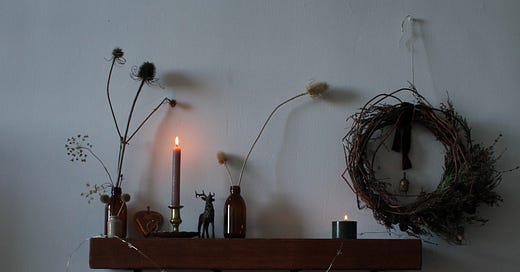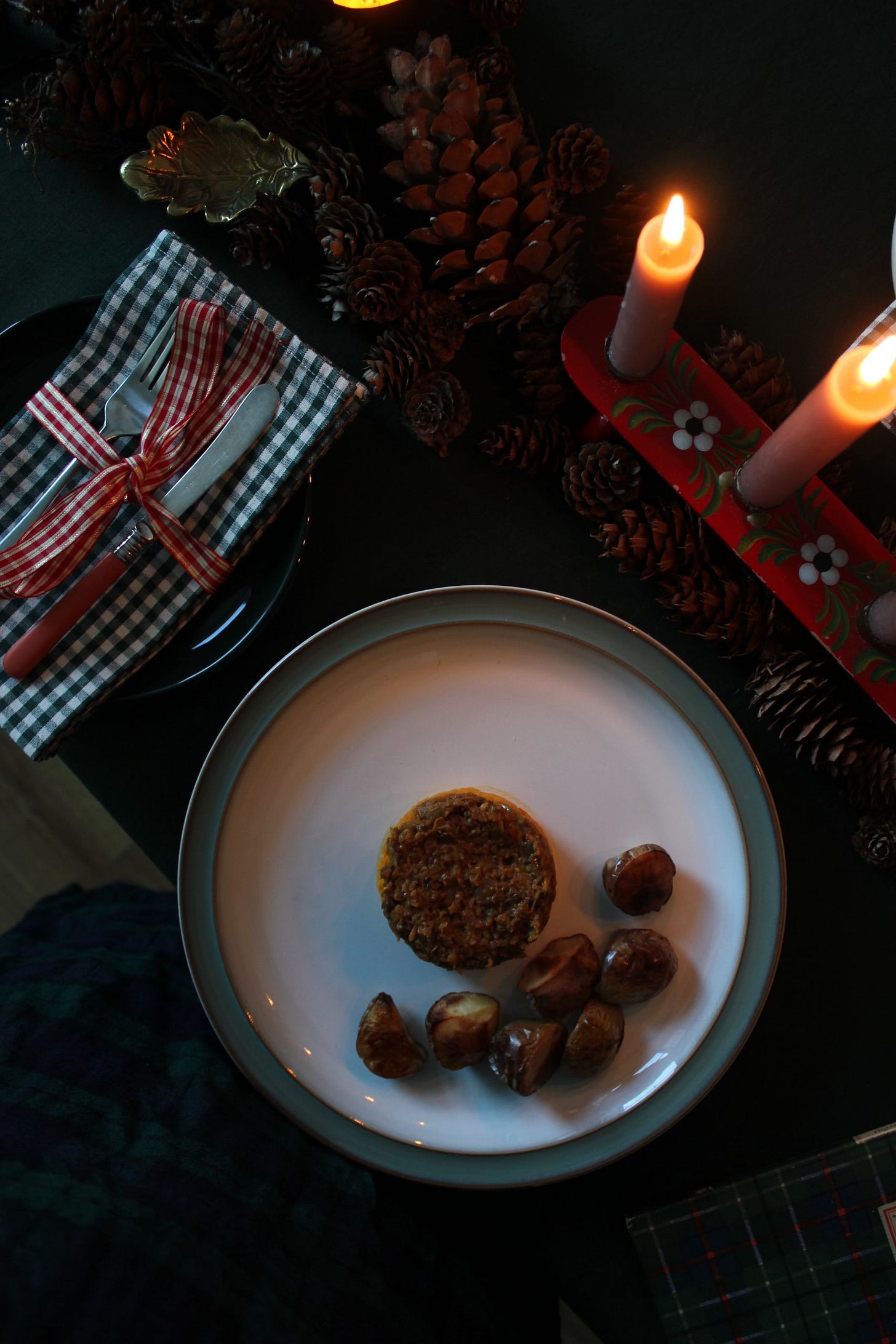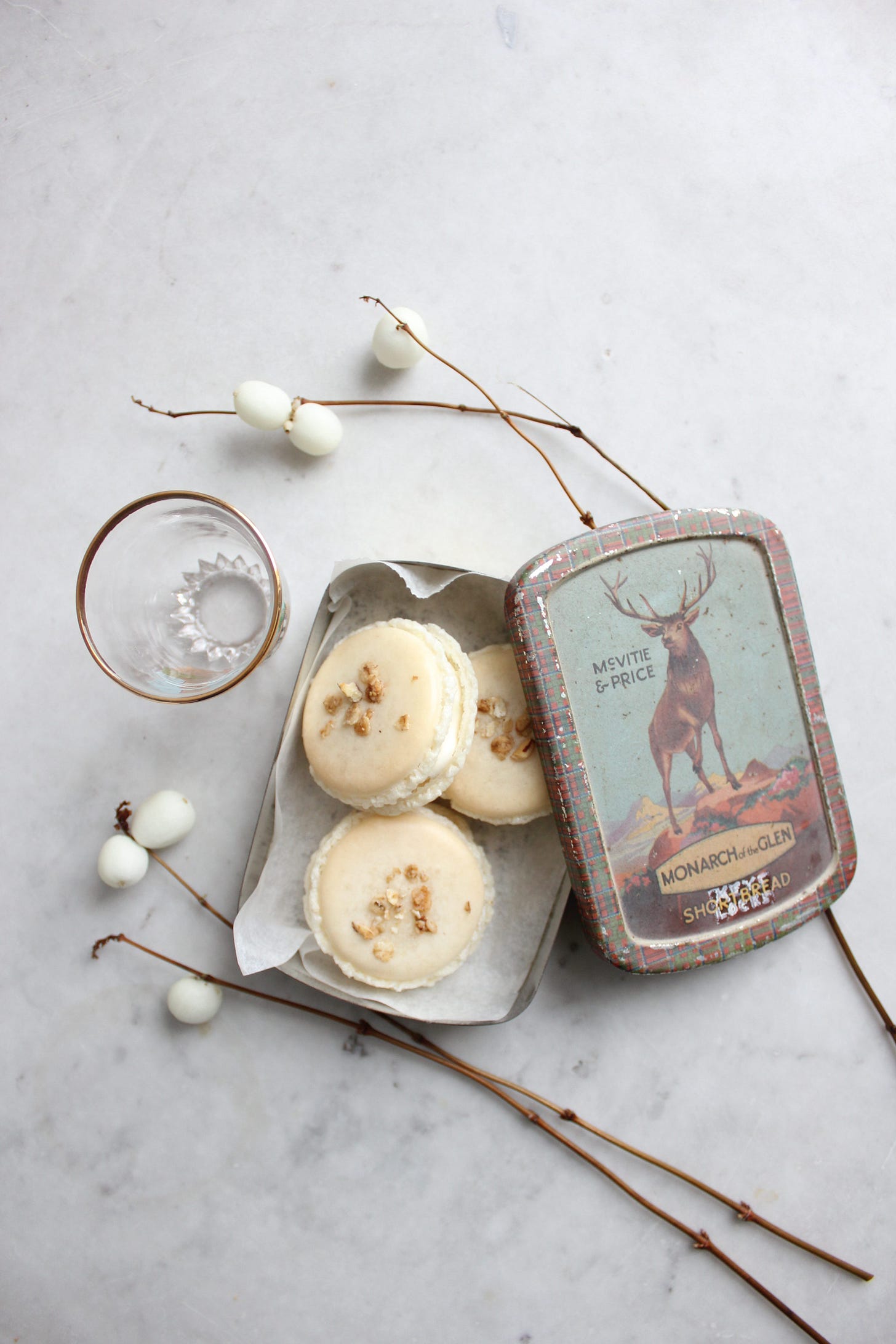“Fair fa’ your honest, sonsie face,
Great chieftain o’ the pudding-race!
Aboon them a’ ye tak your place,
Painch, tripe, or thairm :
Weel are ye wordy o’a grace
As lang’s my arm.”
Rabbie Burns, ‘Address to a Haggis’
The 25th January marks the birthday of one of my favourite writers, Virginia Woolf, and coincidentally Scotland’s national Bard, Rabbie Burns. Unfortunately, only one of those writers has a night of festivities named after them but, focusing on the poetry rather than the poet, I’m all for reasons to celebrate the power of the written word and my Scottish heritage on these dark January days in the lead-up to Imbolc. Each year at the end of January, Scots all over the world raise a dram to the life and work of Scotland’s national poet with a traditional Burns Supper including haggis, neeps and tatties, as well as poetry and piping.
It’s as good a reason as any to set the table and make a meal a wee bit special, so I thought I’d share some more about Burns Night and its associated traditions. I know many of you reading this come from all over the world (thank you for joining me!) so I hope you enjoy learning about this important seasonal celebration in my homeland.
A Burns Supper usually starts with a traditional Scottish soup such as broth, cock-a-leekie or cullen skink. But of course the star of the show is always the main course: traditional haggis. Inspired by Edinburgh institution Henderson’s (thankfully now reopened in a new location in Bruntsfield) I make veggie haggis every year using Janet Henderson’s recipe. I did a step by step of the process last year, which you can view here in my Instagram Story highlights. It’s delicious, properly Wintery comfort food with spices and umami flavour - this version thankfully filled with oats, lentils, beans and mushrooms instead of sheep innards!
Traditionally, haggis is served with clapshot - made by combining mashed neeps and tatties (turnips and potatoes). Some people add onions and chives but I don’t usually bother. For me, the key is plenty of butter and black pepper.
The traditional dessert at a Burns Supper is cranachan: a creamy pud made with crowdie, raspberries, honey, whisky and toasted oats. I think it’s more suited to Summer when Scotland’s delectable raspberries are in season - but I love to make my own twists on the idea with frozen raspberries, which are much more forgiving in baking. In the past I’ve made cranachan cake - an oaty sponge infused with honey and whisky balanced by tart raspberries - and cranachan cheesecake with a creamy crowdie filling, honey and oatcake base and raspberry coulis topping. I’ve even made oat and raspberry cranachan cookies and cranachan macarons with a whisky and honey-infused cream and raspberry curd filling. I also tend to share a seasonal shortbread recipe over on my blog for the occasion (there will be a new one tomorrow - lemon and cardamom).
I love any excuse to set the table, and these pictures show my efforts last year. I tried to avoid too many stereotypical touches though a wee bit of tartan ribbon snuck in alongside my brass stag, foraged pinecones and teasels. The plates were a previous PR product from Denby, the gingham napkins were from Angela Mugnai, and I’ve used vintage cutlery and candle holders (including a brass Pops & Piaf candle holder on my mantle). The beeswax tea lights are by Goldrick via Nadinoo and the dinner candles are Style Your Spaces. Above the mantle is my Pyrus wreath made with a kit via the Village School, and the fairy lights are from The White Company.
A Burns Supper has several traditional readings, poems and songs - starting with the ‘Selkirk Grace’, a Scots thanksgiving said before meals (wrongly) attributed to Burns. Everyone stands when the haggis is brought in and (if you know a piper) piped to the host’s table where the aforementioned address to a haggis would be recited. At the line ‘His knife see rustic labour dicht’, the speaker normally draws a knife, before plunging it into the haggis at the line ‘An' cut you up wi' ready slicht’, cutting the haggis from end to end. Lastly, the haggis is toasted with whisky and then guests begin their main course.
After dessert there are usually more speeches, toasts and more whisky. The main speech usually remembers an aspect of Burns’ life or poetry and is often accompanied by more poetry, including from other writers inspired by Burns.
I hope that’s given you a wee insight into this traditional Scottish celebration. Sláinte! (Cheers!)







We will definitely be having haggis, neeps and tatties! 🏴🏴🏴🏴🏴